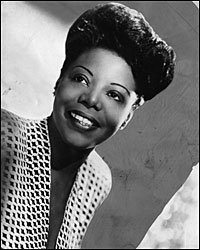Time for another trip to the Daytripper Archive. This time the sad tale of the Kansas City Trolley Barn neighborhood. Never heard of it? Read on...
----
A Trolley Barn Requiem
(originally published in the KC View January 11, 1991)
On the Saturday after Thanksgiving I was walking from the Plaza library to the View's offices at 48th and Troost. I passed the Theis Fountain, it's base dry and unseemly for the winter. My shoes picked up clods of mud from the field east of Theis Park, where UMKC students play flag football. After I crossed Rockhill Road and started down 48th Street, I began to stomp and stagger and drag my foot sideways through the grass to get the stuff off. There, it occurred to me that I had crossed over the western boundary of the Trolley Barn neighborhood. But boundaries are irrelevant in a neighborhood without houses.
In the distance, I saw a man weeping a metal detector over the torn up ground on the west side of Campbell Street, ground that used to be someone's front yard. I went over to talk with him.
He looked a little nervous as I approached. Nabokov wrote that "in an American suburban street a lone pedestrian is more conspicuous than a lone motorist." And in a vacant, decimated inner city neighborhood, you could probably add "threatening" to conspicuous.
I hailed him a half block off and smiled, thinking that might put him at ease.
"Finding anything?" I asked when I got close enough to be heard without shouting. .
"Nah," he said, taking off his earphones, "a couple pennies."
He glanced around, probably looking for something to hit me with if he needed to. Telling him I was a writer on my way to the office seemed to calm him a little but not much. I tried a little cajoling which I'm not very good at. He told me reluctantly that he was from Illinois that he was visiting relatives of his wife's whom he'd met while he was attending Central Technological Institute here in the early 1950s.
"I loved Kansas City then," he said after a pause. His sudden sad wistfulness surprised me. "I thought I was the greatest place. But it's not much of a city anymore.
I said that it certainly was a shame the city couldn't seem to maintain the neighborhoods in the older parts of town. Like the one we were standing in.
"I'm not racist or anything," he said, his voice dropping although we were the only two people in sight, "but the blacks have ruined that part of town. He gestured generally to the east. He told me about driving down the Paseo back then and how beautiful it was.
"The Paseo looks like the London Blitz now," he said.
When I suggested that there might be other culpable parties besides African-Americans, he said that he had to get back to his in-laws' place. He said he'd told them he'd be right back and that was an hour ago. I asked for his name as he headed for his car, in case I decided to write about the neighborhood, but he said he'd rather not give it. I wished him a good day and turned my face toward Troost.
It occurred a to me, facing that direction, that the African-American community is in no way responsible for the most prominent Blitz-esque remnant on the east side: Paseo High. And neither is it responsible for the wreck of the Trolley Barn neighborhood.

[Note: The original Missouri-limestone Paseo High School (picture right from
paseo52.com)was torn down and replaced in the 1990s. At the time this piece was written, it was still a hollow shell awaiting the wrecking ball.]
The Trolley Barn neighborhood got its name from the Kansas City streetcar barn (formerly at 48th and Harrison) where the trolley cars were parked at night. Many streetcar employees had homes in the neighborhood, which remained placidly upper-middle class until the streetcars stopped running in 1957.
This wasn't a fatal blow to the neighborhood. Some residents moved out but some remained to mix with the new, younger neighbors who moved in. University employees moved there throughout the 1960s, as did artists and writers. Two literary magazines -- The Harrison Street Review and Chouteau Review began publishing in the neighborhood in the 70s.
The fatal blow came with the Brush Creek flood of September 12, 1977. Many homes were damaged and while private homeowners began to make repairs, houses owned by the University of Kansas City Trustees fell into disrepair less than a month after the flood, tenants of the trustees were given eviction notices and told vacate by the end of the year.
Protests were made, suits were filed and a few houses were spared but the battle was lost. The Trustees wanted the land. In 1978, the Trolley Barn, a red brick building built in 1910, came under the wrecking ball before it could be declared a historic site. There is a large parking lot in its place now. As surrounding houses in the neighborhood were bulldozed, what do you suppose happened to property values?
Watching this neighborhood die for several years was like watching an elderly neighbor on the decline. The neighborhood was already wizened when I first encountered it, but there still seemed to be signs of normal life in its buildings, businesses and people. There was Joe's Fantasy Island Barber Shop, the fabled Kaye's Rockhill Bar, and even a masque for Islamic students at UMKC. The bulldozers blade has removed them all.
The long awaited, much touted, highly contested University Park research development is on its way. Whether we'll be all that thrilled when it arrives is a story for another day. To borrow the terminology of the Star's real estate writer, the first building should be "coming out of the ground" this year.
For now, the neighborhood is a grid of empty streets and sidewalks, sparsely populated by trees, which actually do come out of the ground. On their own, the trees would stay, putting out leaves every spring, dropping them in the fall, all the while changing carbon dioxide into oxygen. But the bulldozers will find them, and then the neighborhood will really be dead.
Postscript - 2007Looking back, things haven't turned out so badly for the Trolley Barn Neighborhood. Yes, the houses are all gone and so are the bars. But the area now houses the headquarters of the
Kauffman Foundation and the
Anita B. Gorman Conservation Discovery Center, an urban conservation campus run by the Missouri Department of Conservation and the Missouri Department of Natural Resources. And a fair chunk of it is still a large open field, frequented by geese,
which some people detest. I pass it everyday going back and forth to work.
The aforementioned University Park died a sputtering death overseen by keen lawyers about nine months after I wrote this column. More on that next time.






















.jpg)




